Travel Tips
5 Classic Regional Cocktails (with Recipes!)
 Getting ready to ring in the New Year?
Getting ready to ring in the New Year?
A New Year’s Eve party does not stop at simple appetizers and Champagne.
Resident foodie Courtney Crowder shares her tips on making it a memorable evening with classic cocktails, plus tales of each drink’s regional origins and where to experience it on the road.
SAZERAC
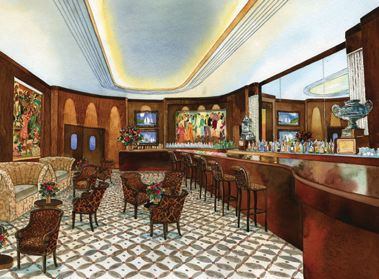 Possibly the first American cocktail, Sazerac was a combination of Cognac and bitters originally made in the 1830s. A pharmacist, Antoine Amedee Peychaud, created the bitters, which he would drop into the Cognac and serve to his friends (Its medical properties have yet to be proven). Peychaud started manufacturing his bitters on a larger scale around 1840.
Possibly the first American cocktail, Sazerac was a combination of Cognac and bitters originally made in the 1830s. A pharmacist, Antoine Amedee Peychaud, created the bitters, which he would drop into the Cognac and serve to his friends (Its medical properties have yet to be proven). Peychaud started manufacturing his bitters on a larger scale around 1840.
The cocktail was named in 1859 when the Sazerac Coffee House opened and started serving the cocktail as its main drink. In 2008, the drink was proclaimed the official cocktail of New Orleans. Today’s recipe combinations can include Cognac, whiskey (the most popular option) or absinthe.
Where to drink it:
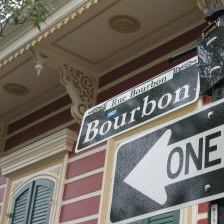 The atmosphere in the French Quarter’s Napoleon House is farm more quaint and charming feel than the other spring-break bars lining Bourbon Street. Don’t let that fool you, though, the strong drinks made at his locale are worth the money. The Sazerac here is made with a mixture of bitters by Peychauds and Angostura, another popular New Orleans brand. The Angostura bitters have a cinnamon and candid orange rind flavor. It isn’t totally traditional, but the combination, using Old Overholt rye whiskey, goes down smooth. The Napoleon House also serves café food.
The atmosphere in the French Quarter’s Napoleon House is farm more quaint and charming feel than the other spring-break bars lining Bourbon Street. Don’t let that fool you, though, the strong drinks made at his locale are worth the money. The Sazerac here is made with a mixture of bitters by Peychauds and Angostura, another popular New Orleans brand. The Angostura bitters have a cinnamon and candid orange rind flavor. It isn’t totally traditional, but the combination, using Old Overholt rye whiskey, goes down smooth. The Napoleon House also serves café food.
The Old Absinthe House has been in business in New Orleans since 1807 and still delights today. Located on the corner of Bourbon and Bienville, the bar is lined with authentic brass faucets that were once used to drip cool water over sugar cubes and into glasses full of absinthe. The bar offers several classic New Orleans cocktails in addition to the Sazerac including the Absinthe Suissesse and Ramos Gin Fizz, but the bar doesn’t serve any sort of food. Calling cards cover the bar’s walls and visitors are welcome to leave their own because, after all, the House’s motto is “Everyone you have known or ever will know, eventually ends up at the Old Absinthe House.”
Click here for the recipe for the traditional Sazerac.
Learn more about New Orleans with Spotlight On New Orleans as well as the Ask the Locals Travel Guide: New Orleans, Louisiana.
CACHAÇA
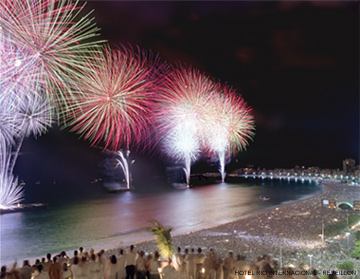 Cachaça is a sugar cane liquor with strength between 38 percent and 80 percent alcohol by volume and is the most popular alcoholic beverage in Brazil. According to 2008 figures, 1.5 billion liters were consumed in Brazil and 15 million liters were exported internationally.
Cachaça is a sugar cane liquor with strength between 38 percent and 80 percent alcohol by volume and is the most popular alcoholic beverage in Brazil. According to 2008 figures, 1.5 billion liters were consumed in Brazil and 15 million liters were exported internationally.
Cachaça has two varieties: un-aged/white and aged/gold. The former is meant for mixing, usually in tropical drinks, while the latter is a premium beverage that is meant to be enjoyed neat. Although cachaça could most accurately be compared to rum, the drink is made with pure cane juice and not molasses. In fact, in the U.S., some brands are marketed as Brazilian rum, upsetting many traditionalists.
Where to drink it:
Bar Favela in Sao Paolo, Brazil, is a hip bar that attracts crowds that come to see and be seen. The bar tries to reflect the experience of people who lived in the urban shanty towns of San Paolo where everyone got together after work to share a beer and some stories. Its mission is to be a casual place where drinkers come to share their joys. The bar offers a variety of Brazilian beers and liquors from across South America, including many drinks made with the famous cachaça liquor. This locale also serves plenty of food options reflecting South American fare.
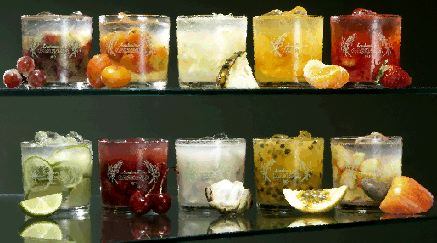 The atmosphere in the Academia de Cachaça is laid-back, but still classy, and features at least 500 varieties of cachaça. The bartenders can educate diners on how best drink your variety – straight, in a caiparinha or in a colorful fruity concoctions, which often have real fruit floating inside. Have a couple of traditionally Brazilian snacks and keep drinking.
The atmosphere in the Academia de Cachaça is laid-back, but still classy, and features at least 500 varieties of cachaça. The bartenders can educate diners on how best drink your variety – straight, in a caiparinha or in a colorful fruity concoctions, which often have real fruit floating inside. Have a couple of traditionally Brazilian snacks and keep drinking.
Can’t make it to Brazil? Try the cachaça cocktails at Bar Marmont in Los Angeles., The Ritz-Carlton in Miami, XYZ bar in San Francisco, or Littachai or BED in New York City.
Click here for a great Cachaça recipe.
Looking for more fun ideas for New Year’s Eve? Don’t miss Countdown to the New Year: 12 Strange But True New Year Traditions. And for the scoop on fun celebrations, try International New Year’s Eve Celebrations.
MOJITO
The mojito is one of the most, if not the most, famous rum-based highballs. The combination of the sweet citrus and refreshing mint is meant to complement the kick of the rum.
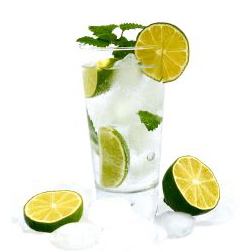 Cuba is the birthplace of the mojito, but the exact origins on the island are hotly debated. The first combination of these ingredients was put together in the drink El Draque in honor of Sir Francis Drake in 1650. The name of the mojito also has many theories: one is that it is related to the mojo, a seasoning of lime, and another is that it is a derivation of madito, Spanish for “a little wet.”
Cuba is the birthplace of the mojito, but the exact origins on the island are hotly debated. The first combination of these ingredients was put together in the drink El Draque in honor of Sir Francis Drake in 1650. The name of the mojito also has many theories: one is that it is related to the mojo, a seasoning of lime, and another is that it is a derivation of madito, Spanish for “a little wet.”
The mojito was a favorite of the author Ernest Hemingway. Hemingway became a regular at the bar La Bodeguita del Medio and even inscribed on the wall, “Mi mojito en la Bodeguita.” (It can still be read on the wall today.) While travel to Cuba is still restricted at the moment, tasty mojitos can also be experienced in Miami’s Little Havana.
Get a taste of the world in our Culinary Travel section.
Where to drink it:
Tap Tap in Miami Beach is a Haitian restaurant that serves great food along with great mojitos. The small bar and subsequent dining rooms are filled with vivid and colorful murals that are hand-painted by local artists.
The food includes appetizers like malanga fritters served with a sweet dipping sauce or heartier items like the stewed goat or poached yellowfish served in a lime-infused broth. Additionally on weekend nights the bar hosts an ethnic band that when listening to them with a mojito in your hand you can almost feel the ocean breeze on a beach in Havana.
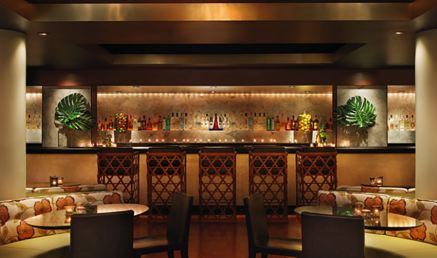 The sexy lounge atmosphere of The Florida Room at the Delano could make anyone feel important. The drinks are a bit expensive, between $15 and $20 per cocktail, but they are worth the splurge. The bartenders are true mixologists who assemble every part of the drink by hand. See something you like behind the bar? Ask them to make you a drink that isn’t on the menu and you won’t be disappointed. The lounge also hosts live music almost every night of the week.
The sexy lounge atmosphere of The Florida Room at the Delano could make anyone feel important. The drinks are a bit expensive, between $15 and $20 per cocktail, but they are worth the splurge. The bartenders are true mixologists who assemble every part of the drink by hand. See something you like behind the bar? Ask them to make you a drink that isn’t on the menu and you won’t be disappointed. The lounge also hosts live music almost every night of the week.
Click here for the classic Mojito recipe.
Get more great cocktail ideas, and get their histories, with On the Air: Ti Martin & Lally Brennan- In the Land of Cocktails. And if you’re a true foodie, don’t miss Winter Holiday Food From Around the World.
MINT JULEP
“The very dream of drinks,” Lexington lawyer and writer J. Soule Smith once said when describing the famous Kentucky Derby drink: the mint julep.
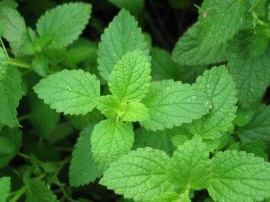 Juleps are made with just four ingredients: mint, bourbon, sugar, and water. Spearmint is normally the choice for mint and is used as a garnish to introduce the flavor through aroma. Whether the mint is muddled or just used as a garnish is an oft-debated subject among bartenders. The pro and con is that muddling the mint releases oils into the mixture, which intensifies the flavor.
Juleps are made with just four ingredients: mint, bourbon, sugar, and water. Spearmint is normally the choice for mint and is used as a garnish to introduce the flavor through aroma. Whether the mint is muddled or just used as a garnish is an oft-debated subject among bartenders. The pro and con is that muddling the mint releases oils into the mixture, which intensifies the flavor.
A julep-like beverage was first discussed in the early 1800s, but became popular when Senator Henry Clay of Kentucky had the drink put on the menu at Willard Hotel in Washington, DC. The Mint Julep has been the beverage of choice at the Kentucky Derby since 1938, with nearly 120,000 juleps served at Churchill Downs over the two-day period of the Derby. In 2006, Churchill Downs served well-publicized $1,000 Juleps that included Woodford reserve bourbon, mint imported from Ireland, ice from the Bavarian Alps, and sugar from Australia served in gold-plated cups. (Proceeds supported retired racehorses.) In 2008, the Downs unveiled the world’s largest mint julep glass.
Check out Equestrian Events Beyond the Kentucky Derby.
Where to drink it:
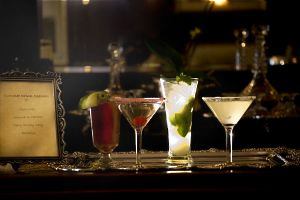 One of the fanciest restaurants in Lexington is Dudley’s Restaurant, which offers five-star dining and even better cocktails. The menu is marked by delicious burgers and glazed pork chops. The bar offers an amazing mint julep and a quite extensive wine list including a good variety of locally produced vinos. During the summer make sure to sit on the patio outside for a view of the old trees that surround the restaurant.
One of the fanciest restaurants in Lexington is Dudley’s Restaurant, which offers five-star dining and even better cocktails. The menu is marked by delicious burgers and glazed pork chops. The bar offers an amazing mint julep and a quite extensive wine list including a good variety of locally produced vinos. During the summer make sure to sit on the patio outside for a view of the old trees that surround the restaurant.
The Merrick Inn has a reputation for serving some of the best and most innovative Southern cuisine in the area. Enjoy dishes like fried banana peppers and Maker’s Mark shrimp, bacon wrapped shrimp grilled with Maker’s Mark barbecue sauce served over cheese grits. For an entrée, try a plate of Southern comfort, made up of fried chicken breast with country ham, red eye gravy and a spiced peach. Have a mint julep with dinner and another one in the lounge where hopefully a race is being broadcast on the television.
During the Derby, the distillers Buffalo Trace and Makers Mark bottle ready-to-drink mint julep beverages.
Check out a great recipe for Mint Julep here.
MAI TAI
Possibly the cocktail with the most disputed story of origin, the mai tai is an American cocktail despite its Polynesian-sounding name. The drink is made of white and gold rum, pineapple juice, orange juice, and lime juice. The most widely accepted story is that Victor Buergon, known to everyone as Trader Vic, created the drink at his Oakland, California, Polynesian-style restaurant aptly named Trader Vic’s. As the tale goes, Trader Vic created the drink in 1944 for some friends that were visiting from Tahiti. After serving it to his friends, they screamed “Maitai Roa!” which literally means “very good” and the cocktail was born.
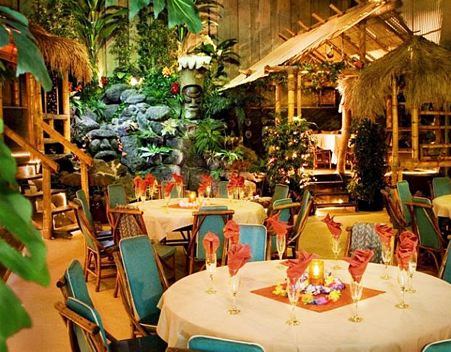 However, Vic’s rival Don Beach, of the Don the Beachcomber tiki restaurant chain claims he created the first Mai Tai in 1933. The drink and both restaurants became extremely popular after World War II when Polynesian culture became an American craze. Despite the origin controversy, the drink’s popularity is owed to both locales that sold the drinks at their hot restaurant chains.
However, Vic’s rival Don Beach, of the Don the Beachcomber tiki restaurant chain claims he created the first Mai Tai in 1933. The drink and both restaurants became extremely popular after World War II when Polynesian culture became an American craze. Despite the origin controversy, the drink’s popularity is owed to both locales that sold the drinks at their hot restaurant chains.
Where to drink it:
Currently in its 75th year, Trader Vic’s is THE place to get a mai tai. Have dinner with a menu made up of East Asian favorites or skip the food and jump right into the mai tai lounge. The lounge is decorated like a Polynesian nightclub and includes oversized basket chairs for serious lounging. There is music almost every night of the week and dancing is a must. Locations are worldwide, but the original is located in Oakland, California.
Open for brunch, lunch, dinner and late-night, Don the Beachcomber in Huntington Beach, California, is famous for its tiki theme. In addition to the mai tai, try the rum barrel, which is served in a rum barrel mug and made with 16 juices and Cemerara rum. Keep the mug afterward for an additional fee. For dinner try the pulled pork, roasted Hawaiian-style and end with the pineapple-upside down cake. Enjoy your favorite island at lower prices during happy hour, 4 p.m. to 7 p.m. every day.
Click here for the Mai Tai recipe.
By Courtney Crowder for PeterGreenberg.com.
Related articles on PeterGreenberg.com:
- On the Air: Ti Martin & Lally Brennan- In the Land of Cocktails
- Winter Holiday Food From Around the World
- Countdown to the New Year: 12 Strange But True New Year Traditions
- International New Year’s Eve Celebrations
All Recipes:












